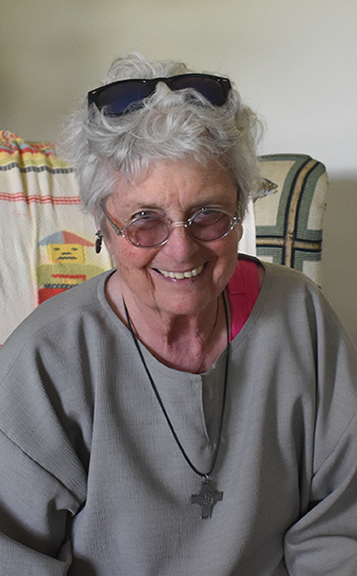FROM THE HERMITAGE
By sister alies therese
Imagine, if you can, a huge pot of bright red paint – another of yellow. Now picture a pot entirely of orange made by mixing the two. A third space – the coming together of two separate things to make something brand new.
Or see a neighborhood full of people from Peru. Nearby is a neighborhood of people from Appalachia. Two miles away is a neighborhood full of folks from Appalachia and Peru, living side by side, sharing in most things. That becomes a third space – overlapping into a completely new neighborhood.

Some of the characteristics of a third space are people coming together for social connection, creativity and belonging. The concept of “third space” is attributed to sociolinguist Homi K. Bhabha, expressing a theory of identity and community realized through language, though its application has expanded over the years. Sociologist Ray Oldenburg popularized the phrase in 1989 in his book “The Great Good Place,” where he emphasized “their crucial role in civic engagement and social interaction.” In an article for the UNESCO Courier, he defined them as “informal public places where people can gather, socialize and maintain a democracy.”
We can look back in history and discover these spaces, such as trading posts, Greek agoras, Roman forums, medieval taverns or your favorite pub.
What is first or second space, you might ask? First is home; second, work or school. These are the spaces in which you live the most and hopefully find comfort, have your responsibilities and success. But a third space is critical for your well-being, especially your mental health.
These are the overlapping places where what you come from – your routines and practices – lessen, and you enter into another world, so to speak. Here, you socialize with folks unknown to you, who you would consider different from yourself. Alternative spaces are explicitly created to address unmet needs, so local community engagement at a coffee shop (often regularly) or a library lessens loneliness and encourages all people to experience a new sort of connectedness.
There are opportunities to grow in any number of ways, to experience laughter, as well as to listen to others. Community gardens or river walks – all third spaces. Parks, support groups or hairdressers are among the many different types of third places. There are running groups (or walking), book clubs, or my favorites – my place of worship, Sacred Heart Catholic Church; Koty Earl’s, where I frequently eat breakfast; and GIRLFRIENDS, where I engage in art and devotion with other women weekly.
There is, I think, yet another sort of third place, and we see it expressed in the Scriptures. It is not a physical place but a turning of the heart. Consider the stories of the Good Samaritan (Lk 10:25ff) and the tender moment where Jesus from the cross invites John to take Mary into his home (Jn 19:26ff). Both of these bring us into a world of compassion from a world of hurt and challenge us to live differently.
We know both these stories and the worlds of anguish they represent; do we hear the unmet cry for compassion where all is new? Marcel Proust said, “Love is space and time measured by the heart.”
Compassion is a third place we all need to travel to, to learn to live in. We can look about in the other worlds we inhabit, those of social media and political chatter. We can become as brittle as the priest or Levite and pass by the opportunity to grow or be of service, or we can bend down like the Samaritan and discover a neighbor in distress. We can open our homes like John and at the same time receive the gift Mary has to bring.
So, what’s your favorite third space? Is it physical, digital or like compassion, from the heart? Maybe you need to create one. Where will you help connect folks so that compassion might be lived out? What are your unmet needs? What is unmet when you carefully look around?
“Compassion is another name for community. It is the mirror of relatedness that accepts the pain and weakness of another as one’s own. It is an expression of love that says, ‘You belong to me,’” wrote Sister Ilia Delio, OSF, in her book “Compassion.”
Blessings.
